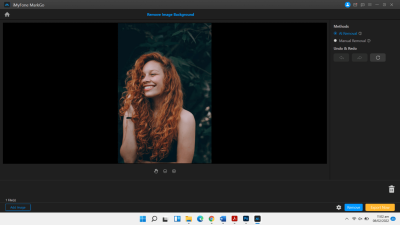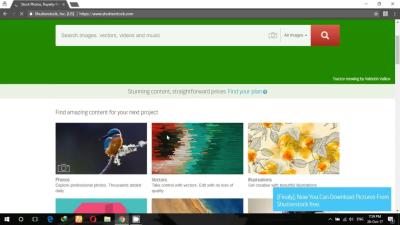If you’ve ever searched for the perfect image to elevate your marketing campaign, you’ve probably come across Shutterstock. It’s one of the go-to platforms for high-quality stock images, but understanding how their licensing and pricing work can sometimes feel overwhelming. Essentially, Shutterstock offers various licensing options tailored to different needs, whether you’re creating a social media post or a large billboard. Knowing the ins and outs of their pricing helps you make smarter choices, avoid unexpected costs, and ensure your marketing visuals align with your budget and legal requirements.
Factors Influencing Shutterstock Image Costs for Marketing
When it comes to Shutterstock, several key factors influence how much you’ll pay for an image used in marketing. Let’s break down the main elements that can impact pricing:
- Image Resolution and Size: Higher resolution images or those intended for large-format prints tend to cost more. A small web-sized image is usually cheaper than a high-res version for billboards or banners.
- License Type: Shutterstock offers two main types of licenses:
- Standard License: Suitable for most online and print uses, with limits on distribution and print run.
- Enhanced License: Offers wider rights, including unlimited print runs and use in products for resale, and generally costs more.
- Subscription vs. On-Demand Purchase: Shutterstock provides subscription plans where you pay a fixed monthly fee for a set number of images, often reducing the per-image cost. Alternatively, on-demand purchases allow you to buy images individually, which can be more expensive per image but offers flexibility.
- Image Popularity and Demand: Trending or highly sought-after images might have premium pricing or special licensing terms, especially if they’re exclusive or featured prominently.
- Usage Scope: The extent of your marketing campaign affects the cost. A global campaign with widespread distribution will generally require an enhanced license, increasing costs, compared to a small local project.
Understanding these factors helps you plan your budget effectively. Always review the licensing details before purchasing to ensure you’re compliant and avoid unexpected expenses down the line. Remember, investing in the right image license means your marketing campaign stays legally protected and visually impactful.
Types of Shutterstock Licensing Options and Their Prices
When it comes to using images from Shutterstock, understanding the licensing options is crucial. Shutterstock offers different licenses tailored to various needs, and their pricing reflects that. Let’s break down the main types so you can make an informed choice.
Standard License
The Standard License is the most common and cost-effective option for most marketing projects. It covers a wide range of uses, including websites, social media, presentations, and print materials up to 500,000 copies. With this license, you can:
- Use images in digital marketing campaigns
- Include images in printed materials like flyers and brochures
- Share images on social media platforms
The price for a Standard License typically starts at around $10-$20 per image, depending on the size and resolution you need and whether you buy through a subscription or as a credit pack. Keep in mind, this license doesn’t allow for use in products for resale or large-scale advertising campaigns.
Enhanced License
If your marketing efforts require more flexibility — such as using images in products for resale, large-scale advertising, or on merchandise — the Enhanced License is the way to go. It allows for:
- Unlimited print runs beyond 500,000 copies
- Use in physical goods for sale, like T-shirts or mugs
- Use in templates for resale
- Inclusion in TV or film productions
The price for an Enhanced License usually starts around $80-$300 per image, depending on the size, resolution, and intended use. Naturally, this is a higher investment, but it provides the legal peace of mind for more extensive marketing efforts.
It’s also worth noting that Shutterstock offers subscription plans and on-demand credit packs. Subscriptions tend to lower the per-image cost for frequent users, while credit packs give you flexibility if you only need a few images now and then.
How to Determine the Right Image License for Your Marketing Needs
Choosing the right license isn’t just about price — it’s about making sure your image usage aligns with legal requirements and your marketing goals. Here’s a simple guide to help you pick the perfect license for your project.
Assess Your Usage Scope
- Will the image be used online or in print?
- What is the expected reach? Small local campaign or global?
- Will the image be part of a product for resale or merchandise?
- Are you planning a large-scale advertising campaign?
Understanding your scope helps determine whether a Standard License suffices or if you need the more comprehensive Enhanced License.
Consider the Distribution and Longevity
If your marketing material is intended for short-term use, like a one-time social media post, a Standard License may be enough. But if you’re creating assets for ongoing campaigns, or materials that will be distributed widely and over a long period, investing in an Enhanced License might be smarter.
Evaluate the Potential Resale or Product Use
If you’re incorporating images into products for resale, such as branded merchandise, the Standard License won’t cut it. You’ll need an Enhanced License to avoid copyright issues.
Think About Future Needs
Planning ahead can save you time and money. If you foresee needing many images or larger-scale campaigns, consider subscribing or purchasing bundles that offer better per-image rates.
Consult Shutterstock’s Licensing Guide
If you’re ever unsure, Shutterstock provides detailed licensing information and customer support. When in doubt, it’s better to choose a license that exceeds your current needs rather than risk legal complications later.
In summary, take the time to understand your project’s scope, distribution, and future plans. Making an informed decision ensures you stay within legal boundaries and get the best value for your marketing budget. Happy image hunting!
Tips for Budget-Friendly Image Licensing on Shutterstock
Looking to get the most bang for your buck when licensing images on Shutterstock? You’re not alone! Many marketers and small business owners want high-quality visuals without breaking the bank. Here are some smart tips to help you save money while still grabbing the perfect images for your campaigns.
1. Opt for Subscription Plans
Shutterstock offers various subscription plans that provide a set number of images per month at a discounted rate compared to on-demand purchases. If you regularly need images, a subscription can be a cost-effective choice. Just make sure to evaluate your monthly needs so you don’t end up paying for images you won’t use.
2. Use Image Packs for Occasional Needs
If your image needs are sporadic, consider purchasing image packs. These bundles often come with a fixed number of downloads at a lower per-image cost. It’s a flexible way to stock up on visuals without committing to a subscription.
3. Take Advantage of Free and Editorial Content
Shutterstock provides a selection of free images and editorial content that can be used for specific purposes. While these might not always match your exact needs, they can help you cut costs, especially for less central visuals.
4. Search Smartly with Filters
Use Shutterstock’s advanced filters to narrow down your search to the most relevant images. This saves time and reduces the temptation to download multiple images just in case, which can inflate licensing costs.
5. Plan Your Visuals in Advance
By planning your campaigns ahead of time, you can select and license images more strategically. This prevents last-minute purchases and allows you to choose the most appropriate and cost-effective options.
6. Understand Licensing Types
Make sure you’re clear on the different licensing options—Standard vs. Enhanced. Standard licenses are usually sufficient for most marketing purposes and are more affordable. Reserve the more expensive Enhanced licenses for high-risk uses or large-scale campaigns.
7. Keep Track of Your Usage
Maintain a record of licensed images and their usage to avoid unnecessary renewals or additional licensing fees. Proper tracking ensures you stay within your budget and avoid licensing violations.
By applying these tips, you can make the most out of Shutterstock’s offerings without overspending. Smart planning and understanding your needs are key to maintaining a budget-friendly approach to sourcing quality images for your marketing efforts.
Conclusion and Best Practices for Using Shutterstock Images in Marketing Campaigns
Using images effectively is a crucial part of crafting compelling marketing campaigns. Shutterstock is a fantastic resource, offering a vast library of high-quality visuals, but it’s important to use these images wisely to maximize impact and stay within your budget.
Key Takeaways:
- Choose the right license: Always select the license type that best fits your campaign’s scope to avoid unnecessary costs.
- Respect copyright laws: Never use images beyond their licensing permissions, as this can lead to legal issues and damage your brand reputation.
- Maintain consistency: Use images that align with your brand identity and messaging to create a cohesive look across all platforms.
- Optimize image size and quality: Export images at appropriate resolutions to ensure fast loading times without sacrificing visual appeal.
- Plan ahead: Incorporate your visual needs into your content calendar to secure the right images early, avoiding last-minute purchases.
Best Practices for Using Shutterstock Images
- Always verify licensing details: Double-check the license type and usage rights before downloading and publishing images.
- Customize images: Add your branding elements or overlay text to make images more unique and relevant to your campaign.
- Avoid overusing the same images: Diversify your visuals to keep your content fresh and engaging for your audience.
- Use images ethically: Ensure your visuals are appropriate and respectful, avoiding stereotypes or sensitive content that could offend viewers.
- Monitor performance: Track how your images perform in campaigns to identify which visuals resonate most with your audience, guiding future selections.
In summary, Shutterstock can be a powerful tool for elevating your marketing visuals when used thoughtfully. By understanding licensing options, planning your visual assets, and adhering to best practices, you can create compelling campaigns that not only look great but also respect legal boundaries and budget constraints. Happy designing!


